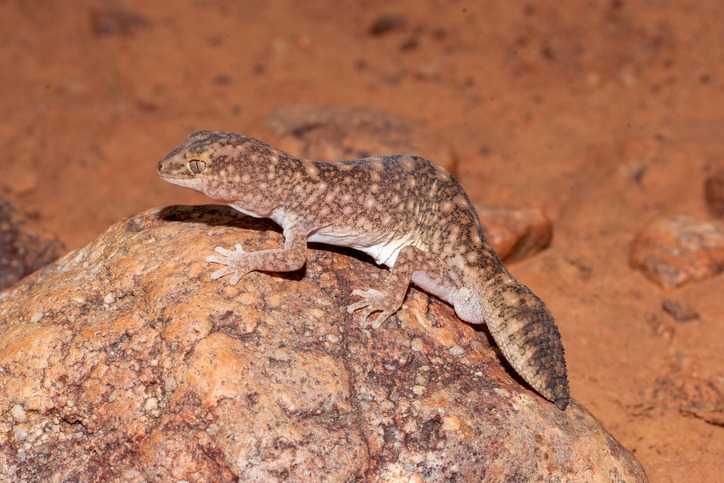The African Fat-tailed Gecko, also known as African Fat-Tailed Gecko, is a ground-dwelling gecko under the subfamily Eublepharinae. This species is crepuscular and terrestrial, and have vertical pupils, moveable eyelids, and no sticky feet. This gecko is found in West Africa, particularly in Senegal and Cameroon. It shares similarities and care requirements with Leopard Geckos. Generally friendly and docile, African Fat-tailed Geckos are great for beginners. If you are interested in taking care of one, make sure to read further!
History
The African Fat-tailed Gecko gained its popularity because it resembles the Leopard Gecko. But unlike the latter, the former is more docile and have higher humidity needs. Through the process of selective breeding, the reptile trade has produced a variety of colors of the African Fat-tailed Gecko, such as albino, tangerine, blackout, patternless, and aberrant.
These geckos are nocturnal, ground-dwelling animals, thriving in dry and arid areas in western Africa. The reptile species was first described by French zoologist André Marie Constant Duméril in 1851. Since the African Fat-tailed Gecko’s population is stable, the International Union for the Conservation of Nature (IUCN) Red List categorized them as Least Concern.
Characteristics of an African Fat-tailed Gecko
Average size: 7 to 9 inches
Average life span: 15 to 20 years in captivity
The African Fat-tailed Gecko is famous for its large, rounded tail compared to a caterpillar. It is bulbous in the middle, and its tail is where it stores its fat for energy. However, it can quickly disintegrate its tail during fights with other geckos.
The good thing is it has the ability to regrow its tail, and usually, the redeveloped tail is a little rounder than the previous one. This gecko possesses small yet powerful legs and agile fingers that enable them to burrow and climb on surfaces.
Its head has some distinct features, too. It has moveable eyelids that help it shield its eyes from debris. It has vertical pupils like that of a snake. As for the coloration, the most common colors are brown and tan with thick bands all over the body. More exotic colors can be purchased from professional breeders.
Caring for an African Fat-tailed Gecko
Taking care of this reptile is fairly easy, making it a common choice among beginner hobbyists. African Fat-tailed Geckos can easily adapt in captivity. The ideal option for pet owners is to keep your pet in a reptile terrarium, while hobbyists or breeders are required to have a rack system if they will be keeping several of them. A 10-gallon enclosure can accommodate a pair of geckos. Meanwhile, female African Fat-tailed Geckos can be housed together with a single male. Never house two African Fat-tailed Geckos because they are territorial and aggressive.
When it comes to heating, lighting, and humidity, African Fat-tailed Geckos are required with 10-12 hours of light exposure daily, but if your pet is nocturnal, it will thrive without UVB light. Provide heating pads below the substrate. Since reptiles are cold-blooded, they rely on their environment to control their body temperature. Provide a basking spot with a temperature of 90 degrees Fahrenheit.
Substrates made from porous materials such as shredded newspaper, coconut fiber, orchid bark, and cypress mulch are recommended. On top of the substrate, provide real and fake plants to increase the enclosure’s humidity levels. Add visual interests such as woods, rocks, and shelters for your pet. Hide boxes are crucial for the African Fat-tailed Gecko—make sure that those boxes are large enough for the geckos to fit in.
As for their aliment, African Fat-tailed Geckos will need a water dish filled with fresh filtered water. The cleanliness of water will bring a great impact on their health and life span. The African Fat-tailed Gecko may soak its body on the dish from time to time, so make sure to replenish the water supply regularly.
A balanced diet for an African Fat-tailed Gecko only includes high-protein insects. As insectivores, they do not take leafy greens and other vegetables and fruits. Insects such as crickets, mealworms, waxworms, caterpillars, silkworms, and canned snails are great for your pet. Before you feed the insects, make sure that they are gut-loaded. You can do so by dusting the insects with vitamin supplements or calcium powder. Adult African Fat-tailed Geckos would occasionally eat small pinky mice. Juveniles will require food daily, but adults can be fed three to four times a week.

